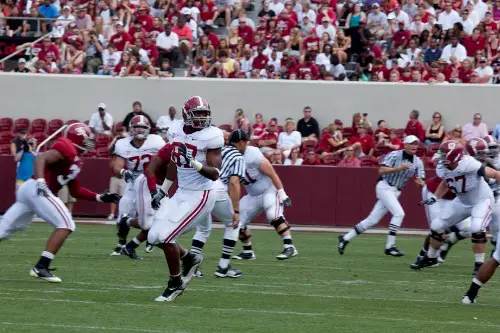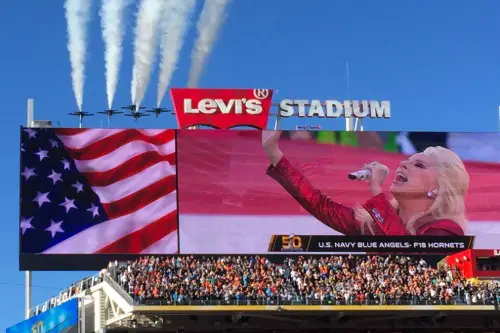1. Tipping Culture

Americans tip almost everywhere—restaurants, bars, coffee shops, and even at self-checkout kiosks. The expectation is usually 15–20% of the bill, no matter the quality of service. This can feel like a hidden tax that keeps creeping upward, especially as more businesses prompt customers to tip. In most other countries, tipping is optional or far less common.
The strange part is that tipping in the U.S. actually stems from employers avoiding paying fair wages after the Civil War. Service workers, especially restaurant staff, often earn below minimum wage because tips are assumed to make up the difference. That means customers are basically subsidizing labor costs for businesses. It’s a system most Americans accept without question, even though it doesn’t really make sense.
2. Drinking Age of 21

America has one of the highest legal drinking ages in the world. Most countries set it at 18, and some even lower, but the U.S. insists on 21. The law came into effect nationwide in the 1980s, pushed by federal highway funding requirements. Americans often grow up seeing alcohol as taboo, which sometimes fuels binge drinking in college.
What’s odd is that you can vote, join the military, and even buy a firearm at 18, but you can’t legally sip a beer. It creates a strange double standard where young adults are treated as mature in some areas but not in others. The logic is supposed to be about brain development and safety, yet the inconsistency feels arbitrary. Still, Americans mostly shrug and accept it.
3. Sales Tax at the Register

In most of the world, the price you see on the tag is the price you pay. But in the U.S., sales tax is added at checkout, so your total is always a surprise. The tax rates vary by state, city, and even by product type, making it confusing for visitors and residents alike. Americans just automatically calculate the “extra” in their heads.
The reason comes down to states setting their own tax policies, and businesses preferring to show lower base prices. It’s technically transparent—people know exactly what portion is tax—but it creates daily inconvenience. Strangely, many Americans defend this as normal, even though most other countries think it’s unnecessary. It’s a rule nobody questions, even when it doesn’t make shopping easier.
4. No Paid Parental Leave

The U.S. is the only wealthy nation without federally mandated paid parental leave. Parents are often forced back to work within weeks, relying on sick days or unpaid leave. Other developed countries offer months—sometimes over a year—of fully paid time off for new parents. Americans have been told this system is just “how it is.”
The Family and Medical Leave Act only guarantees 12 weeks of unpaid leave, and that’s if you qualify. Millions of families simply don’t get that protection at all. Despite research showing the benefits of paid leave for children and parents, reform has stalled for decades. Yet most Americans don’t fight the status quo, even though it makes little sense.
5. Healthcare Through Employers

Unlike most countries that provide universal healthcare, Americans rely on jobs for medical insurance. Lose your job, and you might lose access to your doctor overnight. This system started during World War II when companies offered health benefits instead of higher wages. Decades later, it stuck, even though it ties basic healthcare to employment.
The result is a confusing, expensive system where people stay in jobs they hate just to keep their insurance. Medical debt is a leading cause of bankruptcy in the U.S., yet most accept it as normal. Employers also have immense power over what doctors and treatments their workers can access. It’s a setup that makes little sense but remains unquestioned.
6. Pledge of Allegiance in Schools

Every morning, millions of kids stand, face the flag, and recite the Pledge of Allegiance. This daily ritual started in the late 19th century and became widespread in the 20th. It’s meant to instill patriotism, but for many children it’s just a mindless chant. Most don’t even stop to think about what the words mean.
The practice is unusual compared to most countries, where kids don’t recite national pledges every day. The inclusion of “under God” in the 1950s also tied patriotism to religion. Even though participation is technically voluntary, social pressure makes opting out difficult. Americans rarely question why kids must start the day this way.
7. Summer Vacation in Schools

U.S. schools traditionally give students a long summer break, usually around three months. The custom started when kids were expected to help on farms, but that’s not reality anymore. Despite evidence that long breaks can lead to “summer learning loss,” the tradition continues. Parents scramble for childcare, but the schedule rarely changes.
Many countries use shorter breaks spread throughout the year, which keeps kids more academically engaged. Studies suggest American students could benefit from this too. Still, the long summer is cherished as part of childhood, even if the original reason no longer applies. It’s one of those unquestioned rules baked into the culture.
8. Using Imperial Units

While almost the entire world uses the metric system, Americans stick to inches, feet, and miles. It’s the only major industrialized nation that hasn’t converted fully. This makes math harder, international collaboration clunky, and even scientific work more confusing. Still, Americans resist switching.
The U.S. actually passed a law in 1975 encouraging metrication, but it left adoption voluntary. Most businesses and schools just didn’t bother to make the shift. That’s why soda is in liters but milk is in gallons, creating a bizarre hybrid system. Everyone knows it’s inconsistent, yet people carry on with it.
9. Extreme Work Hours

Americans often treat overwork as a badge of honor. Many work far beyond the standard 40-hour week, with limited vacation time. Unlike Europe, where long breaks are common, Americans usually get just two weeks per year. Even then, some workers feel guilty for using all of it.
The roots go back to the culture of productivity and competition in American society. But the health effects—stress, burnout, poor family balance—are well documented. Despite this, the idea of working less is sometimes seen as lazy. Americans follow the grind mentality unquestioningly, even if it hurts them.
10. Prescription Drug Ads

The U.S. is one of only two countries in the world that allows direct-to-consumer prescription drug ads. TV commercials regularly tell people to “ask your doctor” about a new pill. The ads often list a dizzying list of side effects, yet people still request the drugs. Most countries ban this because it encourages overmedication.
This practice dates back to the late 1990s when regulations loosened. Pharmaceutical companies now spend billions on advertising directly to the public. Studies suggest this influences patient demands and even doctors’ prescribing habits. Despite the downsides, Americans see it as just another part of TV culture.
11. College Sports Obsession

In the U.S., college sports aren’t just extracurriculars—they’re billion-dollar industries. Stadiums fill with tens of thousands of fans, and TV networks pay huge sums for broadcasting rights. Athletes, until recently, weren’t even allowed to earn money, despite the profits schools raked in. The intensity of college sports fandom is almost unheard of in other countries.
The tradition grew from universities trying to build school spirit in the late 19th century. Over time, it turned into a cultural phenomenon tied to identity and community. But it makes little sense that academics and athletics are so tightly intertwined. Still, Americans accept it as a normal part of higher education.
12. The National Anthem Before Sports

Before nearly every major sporting event, Americans pause for the national anthem. It’s so ingrained that people see it as disrespectful if you don’t stand. Yet in most countries, anthems are only played during international competitions, not regular games. The ritual is uniquely American and largely unquestioned.
The practice started during World War I as a way to boost patriotism at baseball games. Over time, it spread to nearly every sport. Even though the connection between a local game and national pride is thin, the tradition remains. It’s one of those cultural habits Americans don’t think twice about.
This post 12 Rules Americans Follow Without Question—That Make Zero Sense was first published on American Charm.


